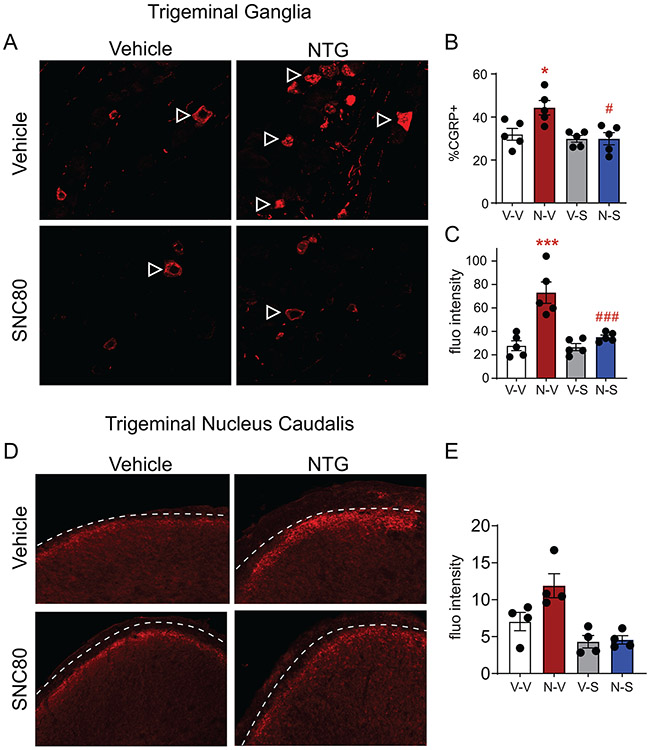Figure 2:
SNC80 blocks chronic NTG-induced increase in CGRP. Tissue is from mice treated and tested chronically in Figure 1. (A) Representative images of CGRP expression in the trigeminal ganglia of treatment groups. Outlined arrowheads point to CGRP+ cells in the trigeminal ganglia. (B) Chronic NTG administration increases the number of CGRP+ cells in the trigeminal ganglia, an effect not observed in the NTG-SNC80 group. p<0.05 treatment, drug, and interaction, two-way ANOVA, Holm-Sidak post hoc analysis, **p<0.01 relative to VEH-VEH. ##p<0.01 relative to NTG-VEH. (C) Chronic NTG administration increased the amount of CGRP expressed within each CGRP+ cell in the trigeminal ganglia, as detected by fluorescence intensity. Mice treated with NTG-SNC80 did not show this increased expression, p<0.01 treatment, drug, and interaction, two-way ANOVA, Holm-Sidak post hoc analysis, ***p<0.001 relative to VEH-VEH, ###p<0.001 relative to NTG-VEH (D) Representative images of CGRP expression in the trigeminal nucleus caudalis of test groups. Dashed lines outline the lateral edge of the superficial laminae of the trigeminal nucleus caudalis. (E) Chronic NTG administration increased CGRP expression in the superficial layers of the trigeminal nucleus caudalis, an effect that was not observed in NTG-SNC80 mice. Two-way ANOVA, p<0.05 effect of NTG, and p<0.001 effect of SNC80. Chronic, intermittent NTG increases CGRP expression in the trigeminal ganglia and trigeminal nucleus caudalis, an effect that is prevented by DOP activation.

